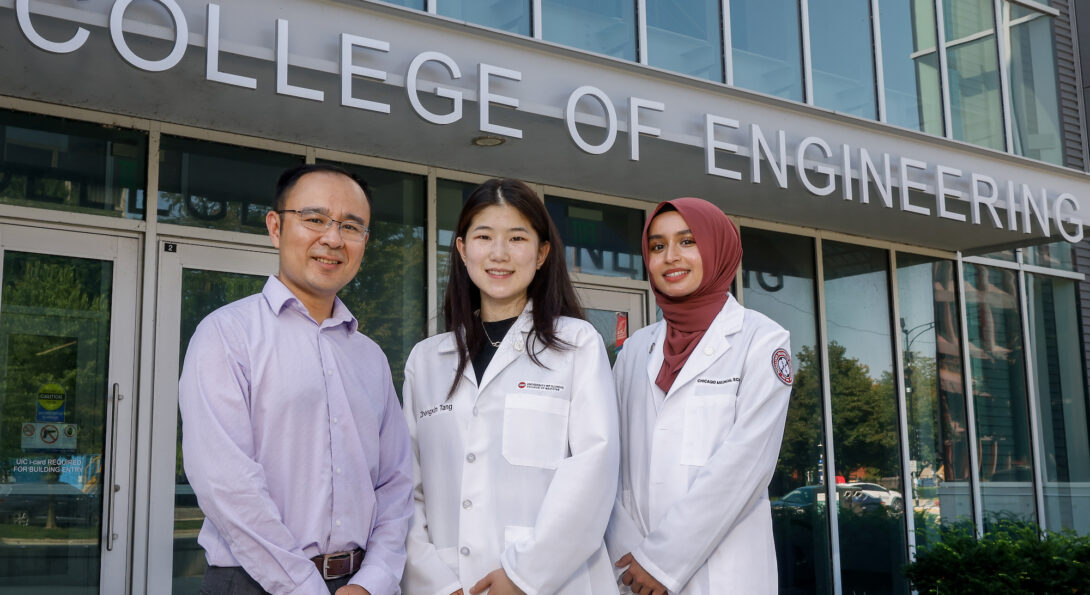BME undergraduates sponsored by NSF published in leading journal in fluid mechanics

block Heading link
What started as a summer research opportunity for two undergraduate students expanded into a published journal article that could improve our understanding of cancer cell metastasis and other medical applications.
Richard and Loan Hill Department of Biomedical Engineering Assistant Professor Zhangli Peng recruited recent graduates Lubna Shah and Zhengxin Tang from his Biotransport class to assist him in his research, which was officially published in the Physics of Fluids journal on August 18, 2023.
Their research analyzed the passage of a droplet through a circular pore. Specifically, they aimed to determine a more exact solution for how the transit time of a droplet changes with pore dimensions. Peng had been working on this topic prior to Shah and Tang joining him.
Both students were supported by grants from the National Science Foundation’s Research Experience for Undergraduates (REU) and the NSF Center for Advanced Design and Manufacturing of Integrated Microfluidics (CADMIM), a partnership between the University of Illinois Chicago and the University of California Irvine.
Peng said that they made a significant improvement to the theories of previous work.
“Previous researchers didn’t consider the lubrication layer between the droplet and the channel wall, which is very important in most applications,” Peng said. “We are the first team to take it into account for this type of study.”
Tang added that previous analytical models often assume a constant flow rate when developing their solutions, however, in practical applications constant pressure is more likely to be the case. Additionally, previous numerical methods were employed to generate simulations regarding the passage of a vesicle through a constriction, but these simulations involve solving partial differential equations and are very expensive. It is also often impossible to address the presence of the thin lubrication layer due to limitations in computational resources.
“It was nice to see more of a research application of what I was learning in the biotransport class,” Tang said. “I liked seeing how what I was learning in class applied to the research. How I understood and could explain the whole process, which before taking the class, there’s no way I would have known what any of this means, so I think it was nice to see that I can understand all this complex stuff.”
Their research is applicable to medical settings such as cancer cell metastasis and red blood cells passing through the spleen. This study gives more of an objective comparison because previous research did not show how the transit time changes in different parameters so Peng, Shah, and Tang investigated biological or experimental settings that can offer more insight into the work of other researchers and doctors.
Current BME senior Spencer Borbas will help to expand Peng and his team’s work by testing various slit shapes the droplet will pass through. Peng’s project exclusively examined droplets passing through a circular pore.
Department of Mechanical and Industrial Engineering Associate Professor Jie Xu and Emmanuele Helfer, Aix Marseille University French National Center for Scientific Research researcher, also contributed to the research.
Since graduating in May of 2023, both Tang and Shah have begun medical school. Tang is attending medical school at UIC and Shah at Rosalind Franklin University of Medicine and Science after working as a R&D disposables engineer at Fresenius Kabi.